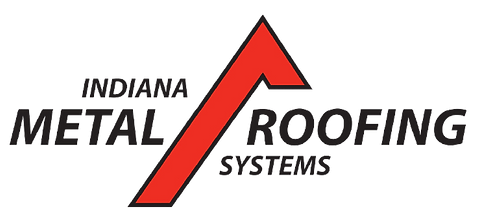Understanding the Basics of Flat Roofing Systems
- Joseph Justice
- Dec 4, 2024
- 3 min read
Flat roofing systems are widely used for both commercial and residential buildings due to their simplicity and cost-effectiveness. At Indiana Metal Roofing Systems, we’ve mastered the intricacies of flat roofing to ensure long-term performance and protection against the elements. In this guide, we’ll explore the key principles behind flat roofs, the materials used, and how to maintain them for optimal durability.

Principles of Flat Roofing
Unlike traditional sloped roofs, flat roofs require specialized design and materials to manage water drainage. Proper waterproofing is essential since flat roofs are more susceptible to water pooling, which can cause leaks and structural damage.
Additionally, insulation is crucial to maintaining energy efficiency. Insulated flat roofs help regulate interior temperatures by minimizing heat transfer. As a result, homeowners can reduce energy costs while improving overall comfort.
Types of Flat Roofing Materials
The choice of material greatly influences the performance and lifespan of a flat roofing system. Here are three common materials used:
EPDM Rubber: Known for its flexibility, EPDM is highly resistant to UV radiation, ozone, and extreme weather conditions. It’s ideal for buildings in areas with fluctuating temperatures.
PVC Membrane: A popular option for commercial roofs, PVC membranes provide excellent waterproofing and are resistant to chemicals, making them a great choice for industrial settings.
Asphalt Roll Roofing: This budget-friendly option is easy to install but may not last as long as other materials.
Did you know? EPDM rubber can last up to 50 years with proper maintenance, making it one of the most durable roofing materials available.
Key Considerations in Flat Roof Design
Design plays a crucial role in the success of any flat roof installation. Effective waterproofing and drainage are two of the most critical components. Without proper drainage systems, water can pool on the surface, leading to leaks and damage over time.
To prevent this, gutters should be installed along the edges of the roof to direct water away from the building. Additionally, internal drains may be necessary for larger flat roofs to manage water runoff more efficiently.
Installation Best Practices
When installing a flat roof, it’s important to follow proper waterproofing techniques to ensure long-lasting performance. Rubberized asphalt or polyurethane foam are commonly used for underlayment, which helps create a strong barrier against water intrusion. Seam sealing is also critical to prevent leaks, especially in areas where the membrane overlaps.
Proper ventilation is just as important. Installing vents allows for airflow, which helps prevent heat buildup and condensation, reducing the risk of moisture-related damage.
Regular Maintenance is Essential
Flat roofs require consistent maintenance to ensure their longevity. Routine inspections should be performed to check for cracks, wear and tear, and other signs of damage. Regular cleaning of gutters and downspouts is also necessary to prevent water buildup and leaks.
By sealing cracks and reapplying protective coatings, homeowners can extend the life of their flat roofing system and avoid costly repairs. At Indiana Metal Roofing Systems, we recommend scheduling regular roof maintenance to catch minor issues before they become major problems.
Conclusion
Flat roofing systems are highly reliable when installed and maintained correctly. By choosing the right materials, ensuring proper drainage, and keeping up with regular maintenance, you can enjoy a long-lasting and energy-efficient roof. Indiana Metal Roofing Systems prides itself on quality craftsmanship, top-notch materials, and a commitment to customer satisfaction. With our A+ BBB rating and 5-star Google reviews, we are the go-to choice for flat roofing solutions in Fort Wayne, IN.
FAQs
1. How long does a flat roof last?With proper materials and maintenance, a flat roof can last anywhere from 20 to 50 years, depending on the climate and installation quality.
2. What is the best material for a flat roof?EPDM rubber is one of the most popular choices for flat roofs due to its durability, flexibility, and resistance to extreme weather conditions.
3. Do flat roofs require more maintenance than sloped roofs?Yes, flat roofs need more frequent maintenance to prevent water pooling, leaks, and debris buildup, but they are generally easier and cheaper to repair.
4. Can flat roofs be insulated?Yes, insulation is key to energy efficiency. Properly insulated flat roofs can significantly reduce energy costs and maintain a comfortable indoor temperature.
5. What are common flat roof problems?Leaks, poor drainage, and UV damage are some of the most common issues with flat roofs. Regular inspections can help catch these problems early.
Learn more about common roofing issues by reading our detailed guide on 5 signs it's time to replace your roof.


Comments